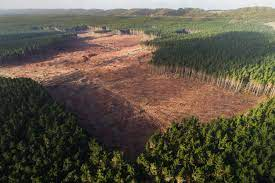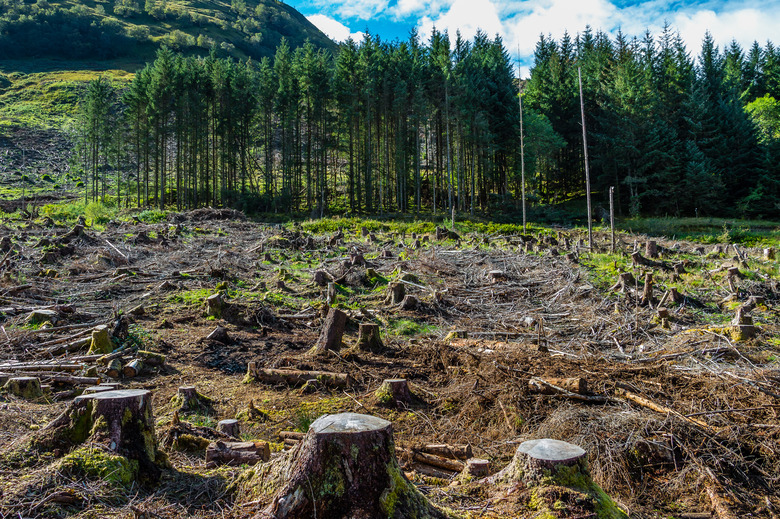Now Reading: Is Deforestation Destroying Our Future? Here’s What Experts Reveal 2025!
-
01
Is Deforestation Destroying Our Future? Here’s What Experts Reveal 2025!
Is Deforestation Destroying Our Future? Here’s What Experts Reveal 2025!

Table of Contents
Deforestation is one of the most serious environmental problems in the world today. Every year, millions of trees are cut down across the globe. This is happening in rainforests, tropical areas, and even in places where trees have been standing for hundreds of years. But why is this happening? And what are the real effects of this silent destruction?
Let’s explore what deforestation means, why it happens, and why we all need to care.
What is Deforestation?

Deforestation means cutting down or clearing large areas of trees or forests. This happens when people remove trees to make space for farming, buildings, roads, or mining. Sometimes, forests are cleared to sell wood for paper, furniture, or fuel.
In some places, forests grow back naturally after being cut down. But in many cases, once the trees are gone, they never return. This permanent removal of trees is very harmful to the environment.
Why is Deforestation Happening?
There are many reasons why deforestation continues to happen around the world:
- Agriculture: Farmers cut down forests to grow crops like soybeans, coffee, and palm oil. These crops are sold all over the world.
- Cattle Ranching: In countries like Brazil, large parts of the Amazon rainforest are cleared to make room for raising cows for beef.
- Logging: Trees are cut down to make wood products like furniture, paper, and building materials.
- Urban Development: As cities grow, forests are cleared to build homes, factories, and roads.
- Mining: Mining for gold, oil, and minerals often destroys large areas of forest land.
While these activities create jobs and products for people, they also have a very high cost for the planet.
The Dangerous Effects of Deforestation
Many people do not realize how much deforestation hurts the Earth. Here are some of the biggest problems caused by cutting down trees:
- Climate Change: Trees absorb carbon dioxide (CO2), which is a gas that causes global warming. When trees are cut down, CO2 goes into the air and makes the planet hotter. This leads to rising temperatures, melting ice, and stronger storms.
- Loss of Animal Habitats: Forests are home to more than half of the world’s animals, birds, and insects. When forests are destroyed, these animals lose their homes. Many of them die or disappear forever. Famous animals like tigers, elephants, and orangutans are in danger because of deforestation.
- Soil Erosion: Trees hold the soil in place. Without trees, rain washes the soil away. This makes it hard for plants to grow and causes landslides.
- Water Problems: Forests help keep water clean and protect rivers and lakes. When trees are gone, water becomes dirty and floods happen more often.
- Impact on People: Many people, especially Indigenous tribes, live in forests. Deforestation takes away their homes and food sources. It also destroys medicines and plants that can help cure diseases.
How Fast is Deforestation Happening?
The numbers are shocking. Every year, about 10 million hectares of forest are lost worldwide. This is equal to 27 football fields of forest disappearing every minute! In the past 100 years, over half of the world’s rainforests have been cut down.
The Amazon rainforest, often called the “lungs of the Earth,” is losing trees faster than ever before. If this continues, experts warn that the rainforest could turn into a dry savanna in the next 50 years.
What Can Be Done to Stop Deforestation?
Thankfully, there are ways to fight deforestation and save forests:
- Plant More Trees: Tree-planting programs can replace some of the lost forests. Many groups around the world are planting millions of new trees every year.
- Sustainable Farming: Farmers can use better methods that grow crops without cutting down new forests. For example, growing food under the shade of trees or using already cleared land.
- Protected Areas: Governments can create national parks and protected zones where no cutting is allowed.
- Using Less Paper and Wood: People can recycle paper, buy wooden products made from recycled materials, and reduce waste.
- Support Forest-Friendly Companies: Consumers can choose products with eco-labels like “Rainforest Alliance” or “FSC Certified,” which show the products came from responsible sources.
- Raise Awareness: Teaching others about deforestation and its dangers can lead to more people caring about saving forests.
A Global Effort is Needed

Deforestation is not just a problem for the countries where it happens. It affects the whole world. When forests are destroyed, everyone suffers from the effects of climate change, loss of animals, and pollution.
That is why governments, businesses, and ordinary people must work together. Global agreements like the UN’s Climate Change Conference and the Paris Agreement are trying to reduce deforestation. But these actions must happen faster to save what is left.
Conclusion: Our Forests, Our Future
Forests are more than just trees. They are life-giving systems that protect the Earth, provide fresh air, clean water, food, medicine, and shelter. Losing them means losing the health of our planet and the future for the next generations.
It is not too late to act. Every small step—planting a tree, recycling paper, buying forest-friendly products—can help protect forests. If we all care and act today, we can save the green heart of our world.
Read More:- Shobha Realty Launches Its Most Luxurious Project Yet—Full Details Inside 2025





















